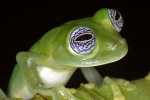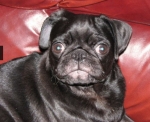Why?
With UARS, the main concern is hard-to-track micro-arousals, and impact on sleep quality.
Typically, we try to divine these things based on subjective feel, and on detailed evaluation of flow rate waveforms (reducing flow limitation, etc.). Both of these are imperfect proxies for what we really want to know: what's going on in our brains.
The Dreem provides a lot of that missing information.
How I am using it
Since it uses an EEG to derive information about sleep stages, etc, I am using it to correlate with information from my machine.
So here's a spreadsheet I am maintaining, where most of these data are coming from the Dreem.

I am using conditional formatting to help better visualize what I think I'm aiming for. This gives me a general view.
I can then zoom in on periods where Dreem is telling me I awake (which I don't always remember myself or register by turning off the machine) to see if there are any obvious patterns preceding those arousals (changes in sleep stage, for example).

Also, the percentage and continuity of of REM and deep sleep provides an objective measure of sleep quality.
Other Issues
- I see some general users complain about comfort, but being used to PAP headgear, it doesn't bother me at all
- I haven't yet had time to explore the features designed to help with insomnia
Following are a couple of key things I've asked them to address:
- has a pulse oximeter, but does not report the data
- no data export of hyponogram or EEG waveform data (would be awesome to be able to integrate with OSCAR)
- I trust the key hypnogram is accurate (certainly more so than other consumer trackers that don't have access to EEG data), but it is dependent on the signal quality of the sensors, which can be a little finicky in my experience depending on fit of the headband
Code: Select all
HGZERMVAP








